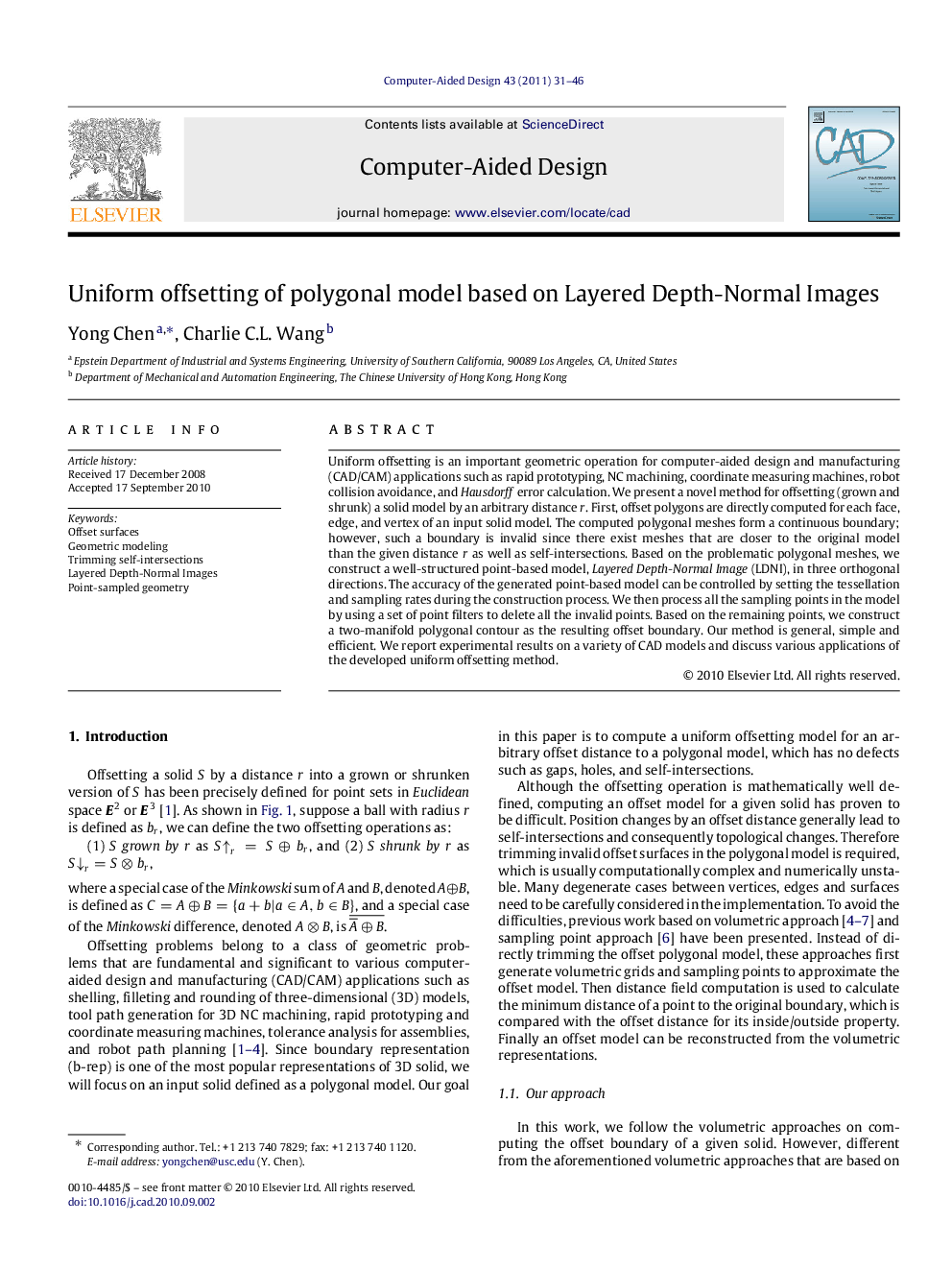| Article ID | Journal | Published Year | Pages | File Type |
|---|---|---|---|---|
| 440862 | Computer-Aided Design | 2011 | 16 Pages |
Uniform offsetting is an important geometric operation for computer-aided design and manufacturing (CAD/CAM) applications such as rapid prototyping, NC machining, coordinate measuring machines, robot collision avoidance, and Hausdorff error calculation. We present a novel method for offsetting (grown and shrunk) a solid model by an arbitrary distance rr. First, offset polygons are directly computed for each face, edge, and vertex of an input solid model. The computed polygonal meshes form a continuous boundary; however, such a boundary is invalid since there exist meshes that are closer to the original model than the given distance rr as well as self-intersections. Based on the problematic polygonal meshes, we construct a well-structured point-based model, Layered Depth-Normal Image (LDNI), in three orthogonal directions. The accuracy of the generated point-based model can be controlled by setting the tessellation and sampling rates during the construction process. We then process all the sampling points in the model by using a set of point filters to delete all the invalid points. Based on the remaining points, we construct a two-manifold polygonal contour as the resulting offset boundary. Our method is general, simple and efficient. We report experimental results on a variety of CAD models and discuss various applications of the developed uniform offsetting method.
Research highlights► A general method to compute the uniform offsetting boundary of a two-manifold polygonal model and an arbitrary offset distance. ► Complex self-intersections in offset surfaces are trimmed based on a point-based method. ► Three point filters can efficiently remove non-boundary points. ► Two-manifold boundary surfaces are reconstructed from the unfiltered point.
